This series will attempt to look at the complete careers of directors, actors
I knew I didn’t want to begin with a
There was only one choice. I discovered Nils Malmros while researching coming of age cinema, and as I saw several of his films in relatively quick succession, was amazed that he wasn’t a director I had heard discussed before. Having subsequently visited the rest of his work, I’ve become convinced that he is – at least outside his native Denmark – one of the true underrecognised greats of world cinema.
Part 1 – Childhood
To understand Nils Malmros’ films, you have to understand his life, as the two are totally bound up together, each informing the other in an artistic ouroboros. Malmros was born in Århus, Denmark in 1944. His father, Richard, was a professor of neurosurgery at the University of Århus. Initially, Malmros followed in his father’s footsteps, but then he saw Jules et Jim, which immediately made him want to be a filmmaker. Malmros’ first film, En Mærkelig Kærlighed [A Strange Romance] was made in 1968, using his own money, a 16mm camera borrowed from his father’s department at the university and his friends as actors. It was poorly reviewed, flopped, and Malmros appears to have little regard for it, saying “I had been so influenced by Jules and Jim that I felt I had to make a film that was deep and poetical. I was not deep and I was not poetical, so the result was fake”. This film appears to be unavailable, so I have to begin my examination of Malmros’
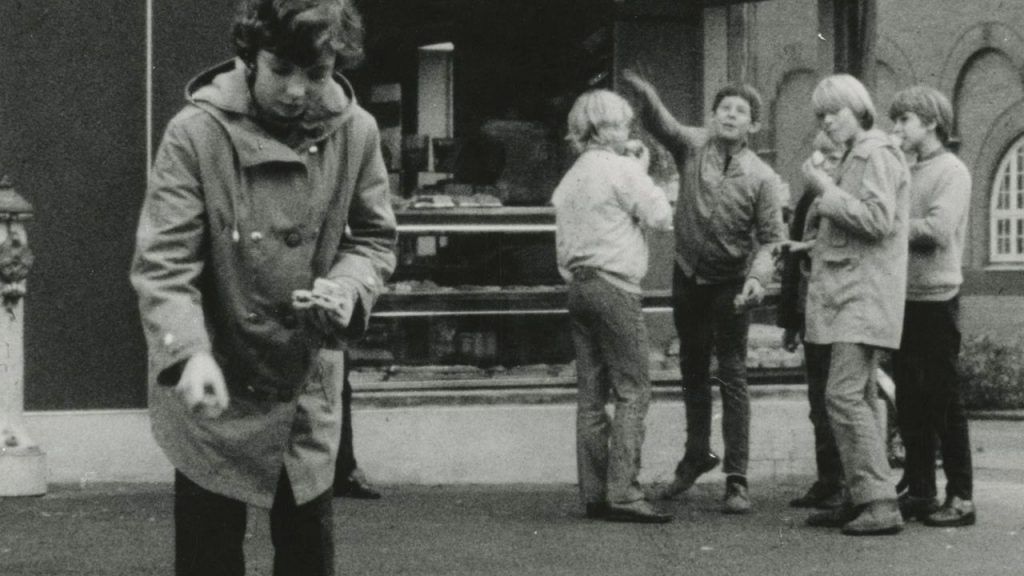
Lars Ole 5C [1973]
In his first of many coming of age films, Malmros tells the low key story of
Shot on grainy black and white 16mm, the film has a feeling of something observed more than it is staged. Frequently, moments that would have much more emphasis in another film are allowed to play out quietly, often in the background. A notable example of Malmros’ restraint comes when Lars Ole is being a pain, playing the wrong notes while his sister is practicing the piano, when he makes her cry, the camera views her through the door, before silently showing Lars Ole realising he’s upset her more than he meant to. It’s a beautifully subtle bit of acting and camerawork that makes us feel as if we are privy to a real moment.
We see a lot of these subtleties in the way the film depicts the politics of the playground, the games of tag and which kids are allowed to play or not, the dominance that older kids are able to exert. This is never more felt than in the way relationships are navigated. Early on we see that Lars Ole has a crush on Inger (Judith Nysom), who is ‘dating’ Hanse (Lars Randrup Mikkelsen), the way the camera often dwells on the space between them is clearly designed, yet feels totally natural, even in the final sequence when we see Lars Ole join in a square dance at school, changing partners as he goes and waiting for his brief chance to dance with Inger.
The relationships between the kids, whether it’s the rivalry between those who live in a certain apartment complex and those who don’t, the pettiness of who is allowed to play tag or not or the teasing and games in the classroom, ring completely true. The performances, all by non-professionals who seem not to have acted again, are completely unforced. Nobody seems to be playing a character or reaching for an emotion at any time.
Lars Ole, 5C is early evidence of Malmros’ instinctive feel for how to tell a story from a young person’s point of view and his deep connection to his own memories, which would fuel almost all of his films for the next 40 years. It’s a beautifully constructed film, you feel Malmros’ direction rather than seeing it, in that his choices are affecting and clearly purposeful, but their design often comes across as accidental—the capturing of a moment rather than contriving the recreation of it. This is reflected in the fact he has said he made the film “ based directly on my memories of my youth, without trying to be deep in any way—just telling what I remembered”. This comes through especially clearly in the dance sequence. We can tell just from the extended time Malmros takes for it that this is something meaningful for him, and we will see when it recurs in later films that this event (or series of events) appears to be burned into his brain; a truly impactful recollection of first love dashed.
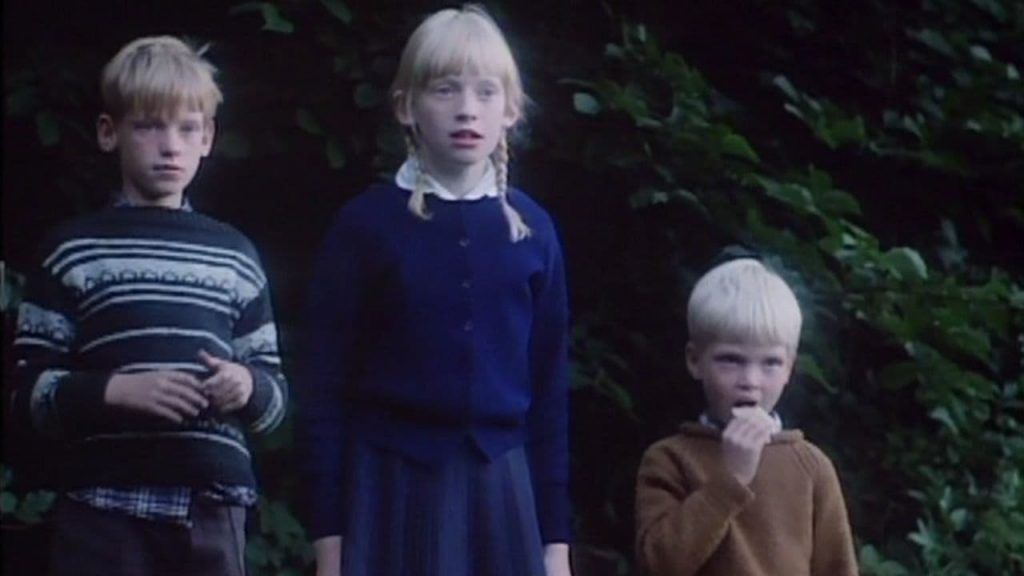
Boys (Drenge) [1977]
The titles of Malmros’ first two coming of age films each suggest a somewhat different film to the one we end up watching. The title of Lars Ole, 5C may be singular, but the film is pluralistic, focusing on Lars Ole’s entire class and the interactions between them. Boys, apparently an even more directly personal film, has a plural title but is much more focused on a single figure, named Ole. Unfolding in three distinct sections, the film explores elements of Ole’s (Mads Ole Erhardsen) sexual development. In the first section, which also recurs as a brief coda, Ole is about six and he and his slightly older cousin
The wraparound story of Boys, with Ole at six years old, is one that marks out the difference between the mainstream of UK and US film and the frankness that is often seen in Scandinavian and European cinema. This is another element that will recur in Malmros’ early films as they explore the period in which his characters hormones are at their most active. Sequences of Ole and Kersten first peeping into windows at a local clinic and seeing naked people and then playing fumbling sexual games with each other are shocking because, while we never see the boys naked, they would be very unlikely to be shown in an English language film. That said, the scenes don’t feel exploitative and Malmros, drawing with incredible frankness from his own early life, does hit on that very specific feeling of the moments we recognise there is something both exciting and forbidden about our bodies.
Outside these sequences, Boys is a familiar but rather downbeat and matter of fact coming of age film. In the teenage sequence we see Ole make fumbling attempts to seduce his first real girlfriend, under the noses of her parents. When he finds that she won’t accede to his advances they break up, but jealousy intrudes when she quickly finds another boyfriend. Again, Malmros communicates a huge amount in brief and simple images, particularly one of a new bike, leaning where Ole’s used to at his girlfriend’s house. It’s an image that not only tells several scenes worth of story, but is sure to evoke feelings and memories from the teenage years of the film’s audience. Similarly, Malmros’ writing is painfully articulate in its awkwardness, whether it’s the hesitancy of the teenage Ole, or the attempt at bravado as he attempts to get together with a nursing student in the film’s third act, again defeated in his efforts while his friend is more successful with the other girl they were hitting on.
Boys perhaps doesn’t have the focus of the features Malmros made either side of it, but it is an ambitious and often insightful attempt to watch a character mature through what would be sexual milestones, if they were fulfilled.
For
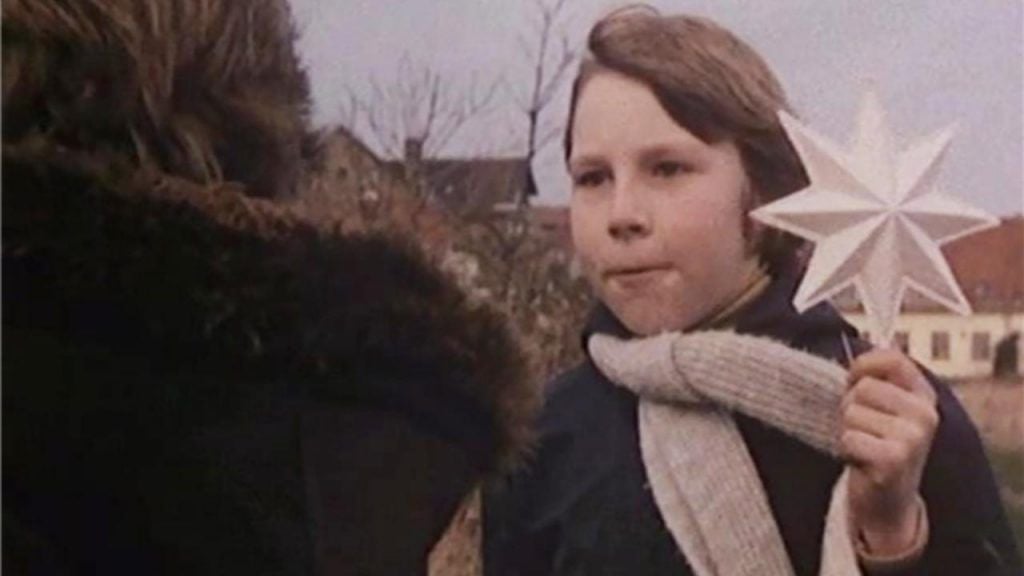
Kammesjukjul [1978]
Malmros’ Christmas film isn’t included in the DVD collection of his work, so the only way I could see it for this piece was on YouTube, with autotranslated subtitles. Obviously this isn’t the ideal way to watch anything and the awkward translations made the film feel stilted and often more than a little odd (the subs consistently refer to a character named Christian as Christians, making for some amusingly incongruous lines that suddenly appear to be about an entire religion rather than a four or five year old boy).
The film is another delicate and
This is not a film full of Christmas cliche. The landscape isn’t snowy, instead Malmros shoots it with a brownish cast, emphasising the chill in the air, the well trodden ground and the leafless trees, and yet there is much warmth here. Scenes of Mads (Morten Reinholdt-Møller) at the table with his parents, or stealing a cookie as they come out of the oven, have a nostalgic glow. The whole class playing along when their teacher brings his four year old grandson Christian to the last day of school is a sweet and innocent moment, one that extends into the Christmas party itself. The drama, as is often the case with Malmros, is small but resonant.
Because it is a
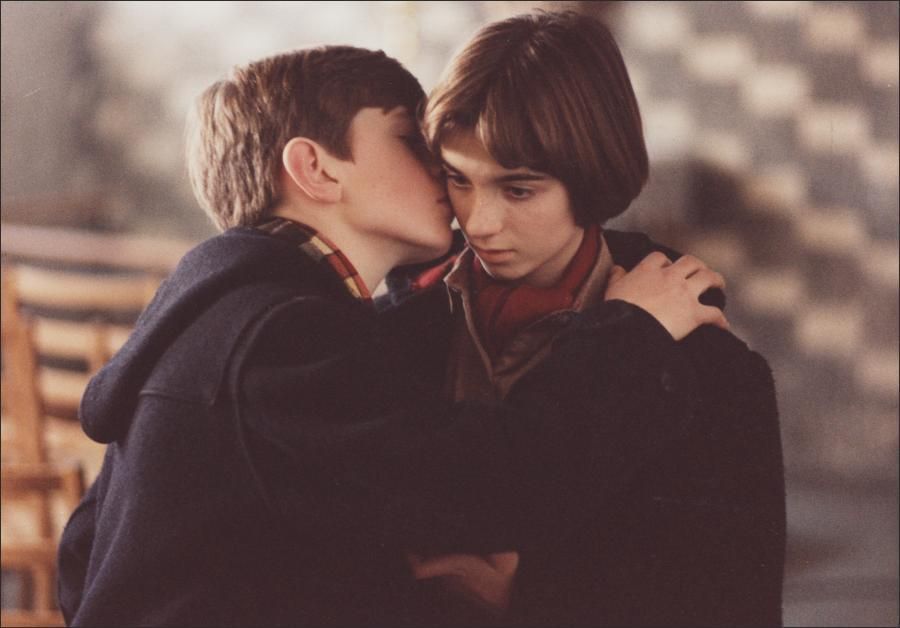
Tree of Knowledge (Kundskabens Træ) [1981]
Malmros’ next feature would, in many ways, draw to a close the first phase of his career. Decades before Richard Linklater would extend the idea for Boyhood, Malmros decided to stagger his next production for the duration of its story, allowing his young actors to visibly grow and change over two years. The film revisits both the dynamics and even some sequences of Lars Ole, 5C, but Tree of Knowledge is both more ambitious – with 17 major characters vying for attention in a
One of the most interesting aspects of Tree of Knowledge is that, while the film remains directly personal, for the first time Malmros didn’t centre it on his own analogue, focusing instead on a female protagonist, Elin (Eva Gram Scholdager), who is initially the most popular girl in her class, but is gradually frozen out by the kids who used to be her best friends. While Malmros is an unabashedly autobiographical filmmaker, he says that he portrays himself more harshly in this film than he behaved in real life “I am one of the children who bully the schoolgirl Elin. In real life, I tried to help the girl, but I don’t tell that in the
Set over a longer period than Lars Ole, 5C or any individual segment of Boys, one of the great strengths of Tree of Knowledge is in how gracefully it handles the passage of time. Like Boyhood after it, we see time pass not through identifying captions but in the gradual growth of its cast; their haircuts, the maturation of their bodies and particularly of their faces. Malmros seems to regard his characters as growing emotionally more slowly than they do physically. Tracking them from 13 to 15, the change he finds in the boys is that their silliness at school goes from sneaking around during a slideshow to drawing crudely explicit pictures on the blackboard – the emphasis may have changed, but they haven’t advanced much.
As well as silliness, Malmros finds vindictiveness in the children, particularly in the slow process of freezing out Elin, without ever telling her why. The reason stems initially from Helge (Marin Lysholm Jepsen), who Elin allows to take her for a walk in an innocent way of saying she’s attracted to him, but she pulls back when he goes for a kiss, prompting him to become annoyed and say “I’ve spent a whole afternoon on you”. Quietly, the talk about Elin and her new nickname “TRL” begins there. Though it is set in the 50s and was released almost 40 years ago, Tree of Knowledge feels contemporary in many ways. It deals with slut-shaming and with ghosting, things that are more talked about now but which have existed and been brushed under the rug forever. Malmros observes all of this from his customary remove, never allowing the film to boil over into melodrama, his characters keeping their emotions inheld but, particularly in the case of Eva Gram Scholdager’s performance as Elin, painfully raw.
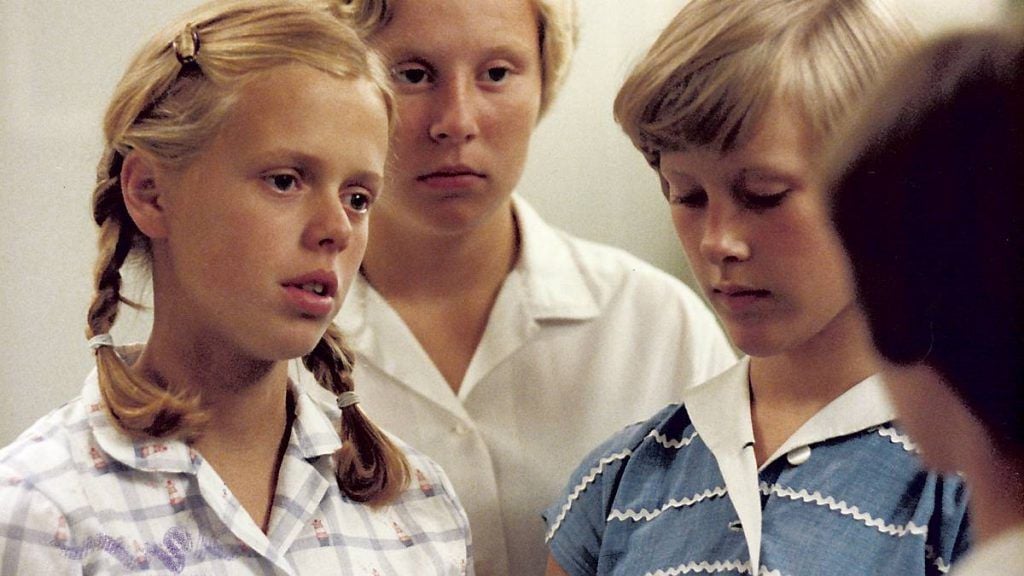
It is fitting that this film marks a shift in Malmros’ career, because in many ways it acts as a culmination of this phase of his work, refining and deepening themes from his last three films. He revisits the formal dances we saw in Lars Ole, 5C but now in more lavish fashion, the use of space and gesture to tell us how the young characters relationships stand still masterful but now seen over a greater span of both screen time and space.
Another recurring aspect of Malmros’ work is both how personal and how universal it can feel. I think we can see this in the way the film seems to have been both influenced and influential – for instance, one scene of the class singing together is almost a mirror, both in how it’s shot and in its function, of a scene in Peter Bogdanovich’s The Last Picture Show, while the final scene at the formal dance feels like a debutante party straight out of a Whit Stillman film. However, this quality of achieving both intimacy and universality is best seen in the way the film affects us as an audience rather than through films that surround it. Malmros’ specificity may be that of a filmmaker recalling and recreating his own youth, but everyone will find a moment here that resonates with them, whether it’s in Elin’s story, either with the friends who freeze her out or the parents who dispense shitty (and sometimes cruel) advice, Gert watching his friend get the girl, Willy dancing with a beer bottle when he doesn’t have a partner at a party or any of the many other little moments that make up the patchwork of this film.
As a culmination of something Nils Malmros had been trying to say, Tree of Knowledge could hardly have been better or more resonant, and its production would lead him to make yet another searingly personal film next. We’ll come to that in Part 2: Adolescence.
Note: Quotes from Nils Malmros were found in “One’s Memories: Nils Malmros Discusses a Life in Film” by Aaron Cutler for Cineaste.com.

